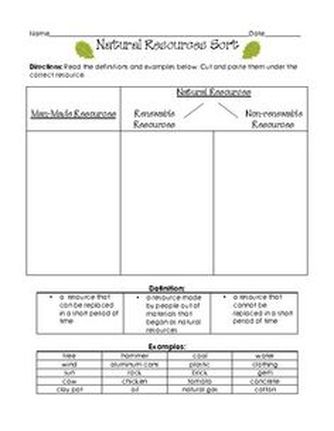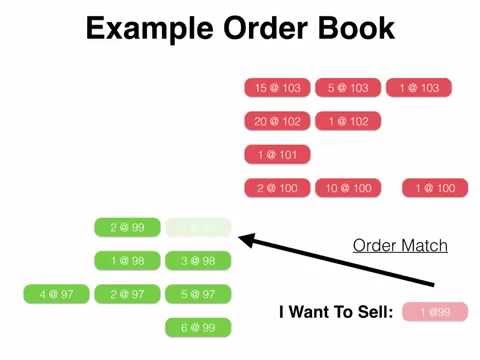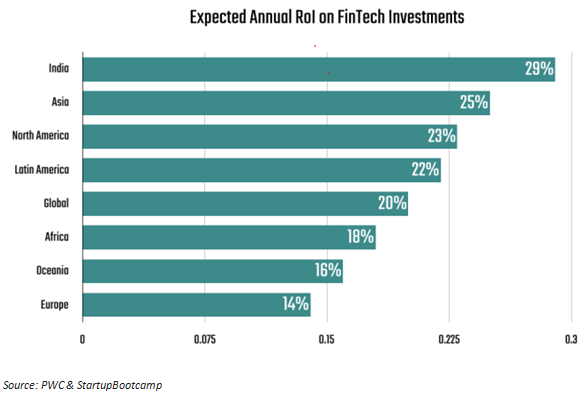Contents:


However, their claims are discharged before the shares of common stockholders at the time of liquidation. The calculation for preferred dividends is different based on the features of the preferred stock, if they are cumulative or non-cumulative, and when the dividends are paid out, quarterly or annually. Think of it similar to the face value of a bond when calculating coupon payments for the bond. The dividend rate is the percentage of the par value that must be paid out annually as the dividend, if the dividend is declared.
The preferred stock will have at least one less right than the common stock , but will have a preference in receiving dividends. Preferred shares are often used by private corporations to achieve Canadian tax objectives. For instance, the use of preferred shares can allow a business to accomplish an estate freeze.
It means that if at any given year the holders of this stock were not paid dividends, they should not expect payment of the same in the future. Skipping dividend payment may happen when the issuing company is not able to achieve the set financial benchmarks. As a rule, preferred shareholders are always the companys priority during dividend payment. If a company feels that it has earned enough and it can pay its shareholders some dividends, the first consideration is always the holders of preferred stock. In this case, only the holders of preferred stock receive payment since dividends are guaranteed each year.

If the investor is a non-cumulative shareholder, he or she will not be entitled to any future claims of the unpaid $2 per share dividend. 4.150% Fixed Rate/Floating Rate Noncumulative Preferred Stock, Series Y, payable May 15, 2023, to holders of record on May 5, 2023. Holders of depositary receipts, each representing one-twenty-fifth of a full preferred share, will be paid $10.375 for each receipt held. 3.875% Fixed Rate Reset Noncumulative Preferred Stock, Series X, payable May 18, 2023, to holders of record on May 8, 2023. Holders of depositary receipts, each representing one-twenty-fifth of a full preferred share, will be paid $9.6875 for each receipt held. 4.000% Fixed Rate/Floating Rate Noncumulative Preferred Stock, Series W, payable June 12, 2023, to holders of record on June 2, 2023.
Preferred stock
Preferred refers to stock that is paid before common stockholders, and it has a more predictable income. With noncumulative preferred stock, the shareholders enjoy a certain level of protection. For instance, they have the assurance that no common stockholder can receive dividends before them.
Citizens Financial Group, Inc. Declares Dividends on Preferred Stock – Investor Relations
Citizens Financial Group, Inc. Declares Dividends on Preferred Stock.
Posted: Fri, 17 Feb 2023 08:00:00 GMT [source]
https://1investing.in/ in arrears aren’t considered a liability to the firm, but they have to be disclosed either on the balance sheet or in the footnotes to the financial statements. Non-cumulative preferred stock doesn’t have the accumulation feature that cumulative preferred stock has. This means that if dividends are not declared in any year they don’t accumulate, and the shareholders lose their right to dividends for the year.
What Are Preferred Dividends?
Now, unpaid dividends of non-cumulative stockholders will not become arrears in such a scenario, which means that the company will not be liable to pay any of the unpaid dividends to the non-cumulative preference stockholders. Effectively, non-cumulative preference shareholders offer financial flexibility to the companies during times of liquidity stretch. The term “non-cumulative preference shares” refers to the variant of preference shares for which the issuing companies are not obligated to pay the stockholders any unpaid or omitted dividends. Preferred stocks are typically purchased for their consistent dividend payments, which offer less financial risk to shareholders than common stock. When businesses have enough profit to pay dividends, they prioritize preferred shareholders first, and then pay common shareholders if there are funds left over. A preferred stock pays stockholders set dividend payments on a regular schedule, but does not have voting rights or as much potential for capital appreciation as common stock.
All unpaid dividends are entitled to be received by cumulative preferred stocks. When the dividends are issued, the stockholders will receive the promised set amount. All prior unpaid dividends have been accrued and are guaranteed to be paid. Non-cumulative preferred stocks, on the other hand, are not entitled to unpaid dividends.
- However, dividends for the current year on the non-cumulative preferred stock must be paid before any dividend may be paid on common stock.
- This needs to happen before common shareholders would receive any payment.
- Corporate bonds may be issued with a conversion feature, enabling those bonds to be converted into a specific number of shares of either common stock or preferred stock.
- Think of this similar to the coupon rate of a bond when calculating the coupon payment.
- Noncumulative preferred stock is exceedingly uncommon since it puts stockholders in the risky situation of having no guaranteed income stream.
- Noncumulative is a term used to describe a type of preferred stock that permits the issuing firm not to pay dividends to its stockholders.
On the downside, there is a limit on how much the investment can appreciate because of its call feature. Issuers often call preferred bonds in low-interest rate environments so they can reissue a stock that pays a lower dividend. A company raising venture capital or other funding may undergo several rounds of financing, with each round receiving separate rights and having a separate class of preferred stock. Such a company might have “Series A Preferred”, “Series B Preferred”, “Series C Preferred”, and corresponding shares of common stock. Typically, company founders and employees receive common stock, while venture capital investors receive preferred shares, often with a liquidation preference.
Examples of Noncumulative perpetual preferred stock in a sentence
When preferred shareholders participate in dividends with common shareholders, the two-class method of computing earnings per share may be applicable. See FSP 7.4.2 for information on participating securities and the two-class method of calculating earnings per share. Some bonds can be convertible into equity securities like preferred shares or common stock. The dividend is usually specified as a percentage of the par value or as a fixed amount (for example, Pacific Gas & Electric 6% Series A Preferred).

We are not a law grant accounting, do not provide any legal services, legal advice or “lawyer referral services” and do not provide or participate in any legal representation. INVESTMENT BANKING RESOURCESLearn the foundation of Investment banking, financial modeling, valuations and more. Cash FlowsCash Flow is the amount of cash or cash equivalent generated & consumed by a Company over a given period. It proves to be a prerequisite for analyzing the business’s strength, profitability, & scope for betterment. LiquidationLiquidation is the process of winding up a business or a segment of the business by selling off its assets.
Companies can also buy back stock, allowing investors to repay their initial investment as well as any capital gains from subsequent stock price increases. Many corporations provide stock options as part of employee remuneration, but these options do not reflect ownership; rather, they represent the right to purchase ownership at a predetermined price at a later date. If the option is exercised while the market price is greater than the promised price, the employees will receive a windfall since they will pocket the difference if they promptly sell the stock . In noncumulative preferred stock, the issuer is not required to make up any missed payments, and does not incur any penalty for missing these dividends.

Wells Fargo has provided this link for your convenience, but does not endorse and is not responsible for the content, links, privacy policy, or security policy of this website. The information featured in this article is based on our best estimates of pricing, package details, contract stipulations, and service available at the time of writing. Pricing will vary based on various factors, including, but not limited to, the customer’s location, package chosen, added features and equipment, the purchaser’s credit score, etc. For the most accurate information, please ask your customer service representative.
7 Preferred stock dividends
On the flip side, preferred stocks trade more like bonds, and thus don’t benefit much if the company experiences massive growth. Common shareholders get voting rights, while preferred share holders typically don’t. Stock is a financial term that refers to all of the shares that make up the ownership of a business or company.
This means the company has more flexibility and will be able to manage their cash flow. Dividends accumulate if a firm doesn’t declare or pay a dividend in any given year. Cumulative preferred stockholders will be owed$10.50/share ($3.50 + $3.50 + $3.50). This is a sort of preferred stock that stipulates that the company must pay all dividends.
- During an initial public offering , a company will sell shares of company ownership, including voting rights, in order to raise capital to fund its business ventures.
- For example, MC corporation bought a convertible bond instrument with an option of converting $1,500 of bonds into 25 preferred stocks.
- See FSP 7.4 for information on including preferred stock dividends in basic earnings per share.
- The market value of the bonds is $1,570, and the stock price is trading in the market at $65 per share.
- On the other hand, cumulative stockholders are entitled to collect the unpaid dividends.
- So, only a few companies offer this kind of shares since investors rarely buy them unless the discount offer is attractive.
A class of preferred stock on which passed dividends do not accumulate and are not paid to shareholders at a later date. An additional caveat is that in the event of liquidation, cumulative stockholders are given preference over noncumulative stockholders. Noncumulative stockholders will get paid only after the cumulative stockholders have received their share.
Therefore, when preferred shares are first issued, their governing document may contain protective provisions preventing the issuance of new preferred shares with a senior claim. Individual series of preferred shares may have a senior, pari-passu , or junior relationship with other series issued by the same corporation. Participating preferred stock—These preferred issues offer holders the opportunity to receive extra dividends if the company achieves predetermined financial goals.
Citigroup Declares Common Stock Dividend; Citigroup Declares Preferred Dividends – Yahoo Finance
Citigroup Declares Common Stock Dividend; Citigroup Declares Preferred Dividends.
Posted: Thu, 20 Oct 2022 07:00:00 GMT [source]
It gives them greater flexibility as the fixed obligation gets reduced. Hence it is beneficial for the companies to issue noncumulative preference shares as the payments get suspended without any penalties. The first payments from the rest of the $1 billion will go to cumulative preferred stockholders, followed by noncumulative preferred stockholders, and finally common stockholders, if any money is still left. Cumulative dividends on preferred stock may accrue over time or upon the occurrence of an event (e.g., the attainment of cash flow goals or profitability levels).
Your request has been identified as part of a network of automated tools outside of the acceptable policy and will be managed until action is taken to declare your traffic. Preference Shares means the Preference Shares in the capital of the Company of $0.0001 nominal or par value designated as Preference Shares, and having the rights provided for in these Articles. Preferred Units means all Partnership Interests designated as preferred units by the General Partner from time to time in accordance with Section 4.02 of the Partnership Agreement. Permitted Preferred Stock means and refers to any Preferred Stock issued by Parent that is not Prohibited Preferred Stock. Company Series A Preferred Stock means the Series A Preferred Stock, par value $0.0001 per share, of the Company.
